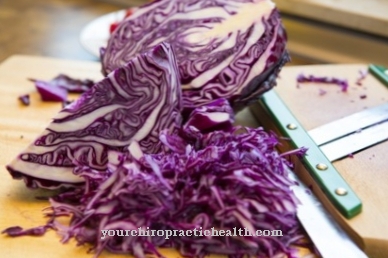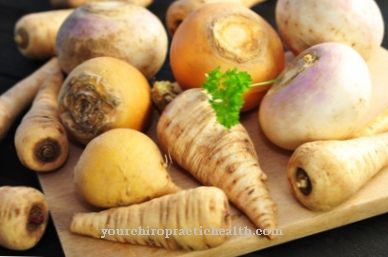flesh refers to the edible components of the muscles of an animal, excluding fish. More broadly, the innards and other parts of the animal also count as meat, but in modern kitchens only muscle meat is usually processed.
What you should know about meat

Science disputes whether humans have always eaten meat and whether they need it at all. The fact is, however, that meat has been part of human nutrition for thousands of years - depending on the culture, it plays a more or less important role.
In Persian cuisine, for example, there is hardly a dish without meat; in cultures close to the sea, such as the Japanese, fish plays the main role. Much earlier, meat was eaten raw with all the risks, as no other preparation was yet known. It was probably an accident that led to the discovery that cooked meat tastes much better, becomes softer and at least lasts a little longer than raw meat. The current definition is limited to the muscles of animals, most of the meat suppliers are mammals or birds.
Other classes of animals such as reptiles are eaten less often, such as snakes or crocodiles. Muscle meat naturally contains not only muscle fibers, but also fat, connective tissue and empty blood vessels. In the case of industrially produced meat, the antibiotics that the animal received during its lifetime also play a role and that can now be found in remnants in the muscles. In earlier decades and centuries in particular, the innards of various animal species also played a role as meat, such as the liver, heart or brain. These parts are eaten less today. Fish does not count as meat, but is viewed independently as fish, even if the muscles are also eaten in fish.
Importance to health
Meat has both advantages and disadvantages for health, depending on the amount consumed, quality and origin. Especially red meats like beef contain a lot of iron, which can help with iron deficiency. White meats such as chicken and turkey are considered to be low in fat, but very rich in protein, which makes them the ideal source of protein for athletes.
The proportion of natural, animal fat that humans can obtain from meat can often be sufficient to cover the daily requirement of fat and is a much better source than frying fat from French fries, chips and other fast food. Also minerals apart from iron can be found in most types of meat. Despite its health benefits, meat still contains a lot of cholesterol and should therefore not be eaten in large quantities, true to the motto: "The amount makes the poison." With large amounts of meat, people also consume too much fat.
Meat from factory farming is also difficult, as it could contain antibiotics, other drug residues and, last but not least, growth hormones. In addition, there are diseases such as BSE or bird flu, which can spread particularly well in factory farming. Smoked, cured or otherwise industrially processed meat is usually considered to be rather unhealthy due to its other components.
Ingredients & nutritional values
Since meat has received its justification in the menu as a supplier of valuable proteins, it stands to reason that it mainly supplies proteins. Since nowadays only pure muscle meat is consumed, most of the meat on the plate consists of protein and, depending on the animal, a certain proportion of fat and connective tissue.
Most types of meat also contain minerals in different compositions. In the case of simply prepared meat, only the spices are added, nothing more can be found in natural meat. It is completely different with meat from factory farming or industrially processed meat dishes. Preservatives, carcinogenic nitrite salts or simply a high fat content can play a role here.
Intolerances & allergies
For a long time there was no allergy to meat, but a few cases are known. The rare meat allergy manifests itself like any other allergy, but seems to be dependent on the animal origin of the meat. Patients who generally tolerate poultry well reacted to red meats such as beef - but humans can also be allergic to poultry or to all types of meat.
The reason is probably a sugar molecule in meat. Real intolerance to meat are also rare, as the pure product consists largely of proteins and these are vital. It is only in sports circles that some types of meat, such as pork, are rejected because they contain more fat than chicken, for example - so they do not fit into a low-fat diet.
Shopping & kitchen tips
Meat is an ingredient that absolutely has to be fresh, which also makes it a bit difficult to purchase and store. Unprocessed, raw meat must be used up within a few days, the use-by date is decisive.
After that, it should either not be eaten at all or, if it looks and smells good, only cooked at high temperatures to kill all possible germs. Raw, fresh meat is generally stored in the refrigerator in airtight packaging. There are dishes that are prepared from raw meat, but well-cooked meat is safer for your health. It is important that the meat reaches a certain minimum temperature, often at least 80 ° C is recommended.
At this temperature the most serious germs should die and are therefore no longer dangerous for humans.Steaks are therefore mostly harmless, but meat types that have exceeded this minimum temperature are safer. Therefore, pregnant women are not advised to eat English or medium-fried steaks.
Preparation tips
All sorts of spices go well with meat. The meat can be marinated in a mixture of oils and spices, rubbed or refined with it while cooking. How the meat is best heated also depends on the recipe. Usually it is first fried over high heat, which destroys the proteins of the upper layers of meat and allows the crispy crust to form.
Inside, the meat stays juicy and soft. After that, meat can be cooked at very low temperatures until it almost crumbles, but it can also be fried, boiled or served as an addition to soup. The cooking time of meat depends on the type of animal it came from and its thickness. For thin pieces of meat such as minute steaks or diced meat, a few minutes are sufficient, for a roast or a whole bird such as a goose or turkey it can be several hours.













.jpg)

.jpg)
.jpg)











.jpg)